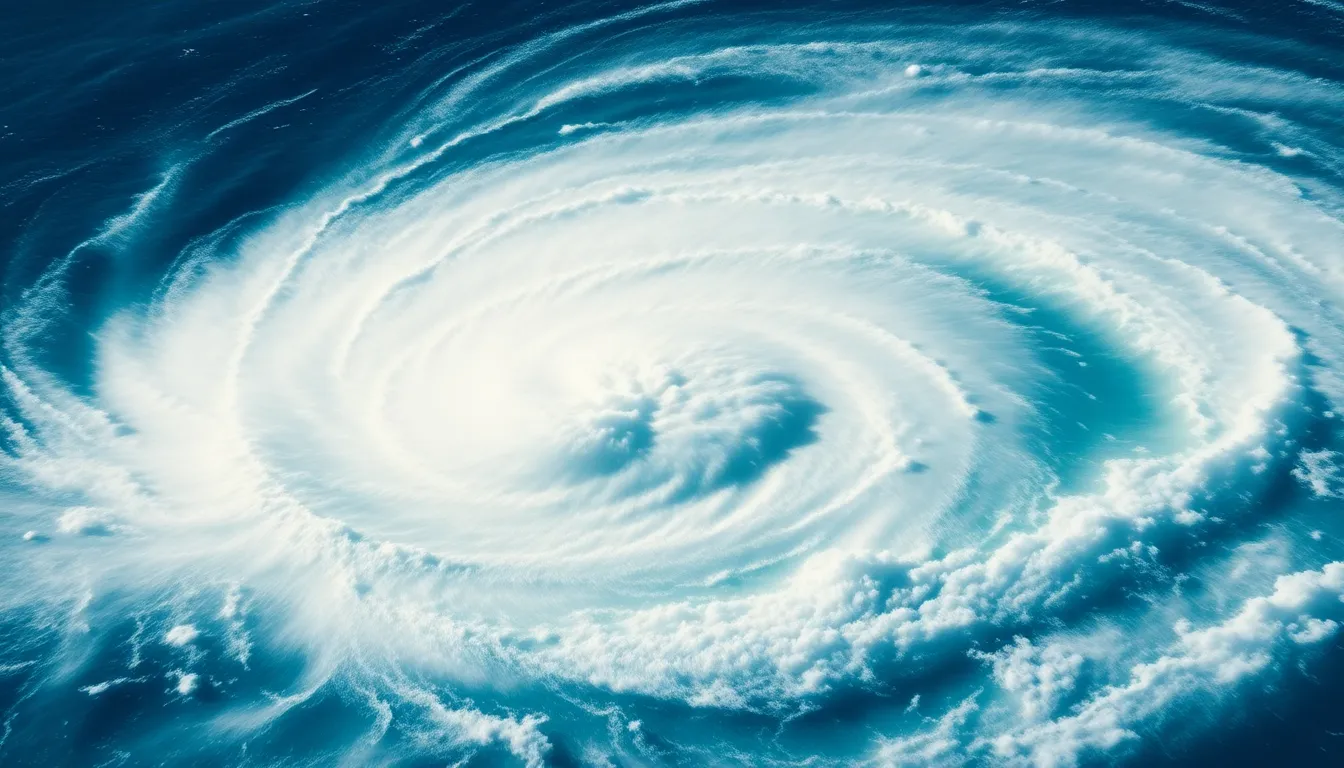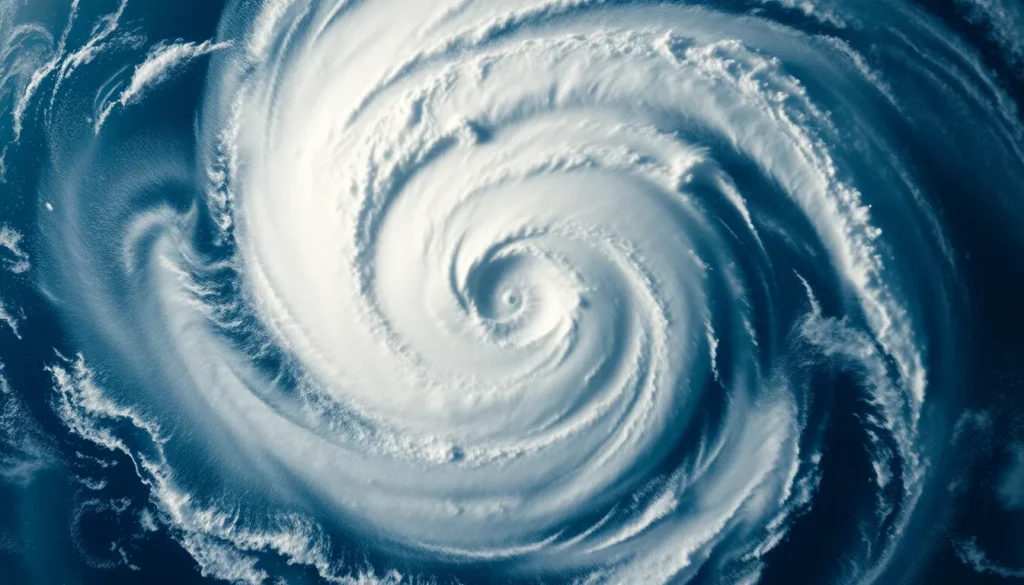Table of Contents
ToggleHurricane Kristy is making headlines as the strongest storm currently swirling in the ocean, and it’s not just another tropical tantrum. With winds that could rival a jet engine and a personality that could make even the most stoic meteorologist raise an eyebrow, Kristy is proving to be a force of nature that demands attention.
Overview of Hurricane Kristy
Hurricane Kristy currently ranks as the strongest storm in the ocean. Wind speeds reach up to 180 mph, resembling those of a jet engine. Intensity remains at a Category 5, elevating concerns among meteorologists. The storm’s formation occurred in the eastern Pacific, quickly intensifying due to favorable conditions.
Meteorologists report that Kristy’s eye measures approximately 10 miles in diameter, showcasing a well-defined structure. Pressure readings confirm values around 910 hPa, signifying extreme strength. Experts highlight the storm’s rapid development over just 24 hours, amplifying potential impacts.
Public attention remains focused on Kristy’s trajectory and potential landfall. Predictions indicate movement toward the west-northwest, raising concerns for land areas. Nevertheless, uncertainties in forecasting persist, as conditions can change swiftly.
Emergency management agencies prepare resources and personnel for possible evacuations along the coast. Residents are urged to stay informed through reliable weather sources for timely updates. Continuous monitoring of Kristy’s progress is essential to assess risks accurately.
The storm’s impact could include significant rainfall and life-threatening conditions as it progresses. Flooding and storm surges pose additional threats, emphasizing the need for preparedness. Most importantly, the ongoing observations of Hurricane Kristy will inform future decisions for safety measures.
Weather Conditions Leading to Strength


Hurricane Kristy’s exceptional strength stems from a combination of favorable weather conditions. Rapid intensification plays a key role in shaping the storm’s intensity, with various factors contributing to its current Category 5 status.
Hurricane Formation
Hurricanes form over warm ocean waters, typically when sea surface temperatures exceed 80°F. Warm, moist air rises from the water’s surface, creating low-pressure areas that draw in additional air. As this process continues, clouds develop, and thunderstorms become more organized. Kristy’s origin in the eastern Pacific highlights the significance of optimal warm water and atmospheric conditions that fueled its formation and growth.
Meteorological Factors
Several meteorological factors influence Hurricane Kristy’s strength. Low wind shear fosters a stable environment for vertical development, enabling the storm to maintain its structure. High humidity in the atmosphere supports this growth, allowing the storm to gather energy. Additionally, the presence of the Madden-Julian Oscillation enhances convection, further intensifying Kristy. Satellite data shows powerful convection and a well-defined eye, indicative of the hurricane’s impressive organization and strength.
Impact on Affected Areas
Hurricane Kristy poses significant threats to impacted regions, demanding urgent attention from emergency responders and communities alike.
Damage Assessment
Assessment teams target areas predicted to experience the storm’s force. Extensive damage is likely, given wind speeds reaching 180 mph. Structures may suffer major integrity losses while power outages could affect thousands. Flooding, attributed to heavy rainfall, poses additional risks. Coastal areas are particularly vulnerable to storm surges, leading to increased erosion and destruction. Early reports from meteorological agencies indicate that infrastructure may face severe challenges, emphasizing the need for prompt analysis and remediation.
Evacuation and Safety Measures
Evacuation orders apply to regions along the storm’s projected path. Emergency management agencies recommend local residents heed warnings and prepare for possible relocations. Timely communication with families and neighbors becomes essential for safety. Shelters equipped to handle evacuees pop up in various locations, providing safety and basic necessities. Resources are mobilized to ensure smooth transitions for affected individuals. Monitoring reliable sources for updates, communities must prioritize safety above all else.
Comparison with Other Storms
Hurricane Kristy stands out among existing storms for its unprecedented strength and intensity. Featuring wind speeds reaching 180 mph, Kristy rivals other historical storms like Hurricane Patricia, which peaked at 215 mph in 2015. Nonetheless, Kristy’s current status as a Category 5 storm marks it as one of the most powerful storms recorded in the eastern Pacific.
Meteorologists compare Kristy’s impressive organization to that of Hurricane Irma, known for its devastating impacts in 2017. While Irma exhibited a well-structured eye, Kristy’s eye expands approximately 10 miles in diameter, signifying its extreme strength. The storm’s pressure readings around 910 hPa further illustrate its intensity, placing it among the highest-ranking storms in modern history.
Favorable meteorological conditions play a crucial role in Kristy’s formation, as seen in previous hurricanes like Harvey, which intensified rapidly over warm waters. Rapid intensification remains a key characteristic shared by Kristy and notable storms, with low wind shear and high humidity significantly contributing to their growth. Observations indicate that Kristy’s combination of these factors surpasses many of its predecessors.
Evoking memories of past storms, Kristy’s predicted trajectory raises concerns similar to those experienced during Hurricane Sandy in 2012. Significant rainfall and increased storm surges pose threats to coastal areas, prompting emergency management agencies to remind residents of the risks. Evacuation orders issued for regions in Kristy’s path emphasize the importance of preparation and awareness, just as communities did when faced with earlier hurricanes.
Scientific Significance
Hurricane Kristy represents a major milestone in meteorological studies due to its extraordinary intensity. With wind speeds reaching up to 180 mph, Kristy displays characteristics comparable to jet engine power. The storm’s formation in the eastern Pacific accentuates the role of warm ocean waters in hurricane development. Meteorologists emphasize the importance of various atmospheric factors in Kristy’s growth, including low wind shear and high humidity levels.
Pressure readings around 910 hPa illustrate Kristy’s formidable strength. Such measurements rank it among the strongest hurricanes recorded, placing it alongside significant historical storms like Hurricane Patricia. Satellite imagery highlights a well-defined eye, showcasing the hurricane’s remarkable organizational structure. Meteorological models indicate that Kristy’s rapid intensification relates closely to the presence of the Madden-Julian Oscillation, which boosts convection significantly.
Comparisons to the organization of Hurricane Irma reveal Kristy’s potential for devastating impacts. Observers note that the predicted trajectory raises alarm bells similar to those experienced during Hurricane Sandy. Communities in Kristy’s path face the risk of extensive rainfall, flooding, and dangerous storm surges, leading to preemptive evacuations.
Weather agencies respond to the threat posed by Hurricane Kristy by preparing resources and public safety measures. Emphasis on awareness and readiness remains crucial as the storm approaches land. Continuous monitoring will provide updated data, helping forecast models refine predictions about its impact on coastal areas. The scientific community utilizes this hurricane to enhance understanding of extreme weather systems and improve future preparedness strategies.





